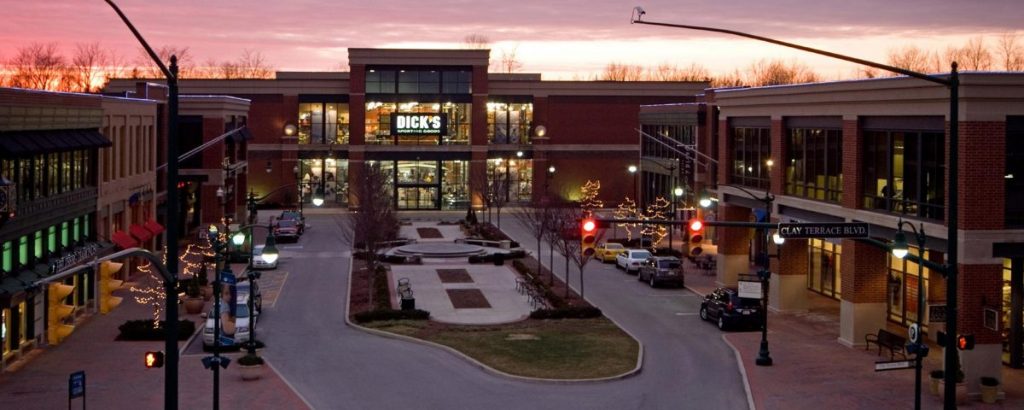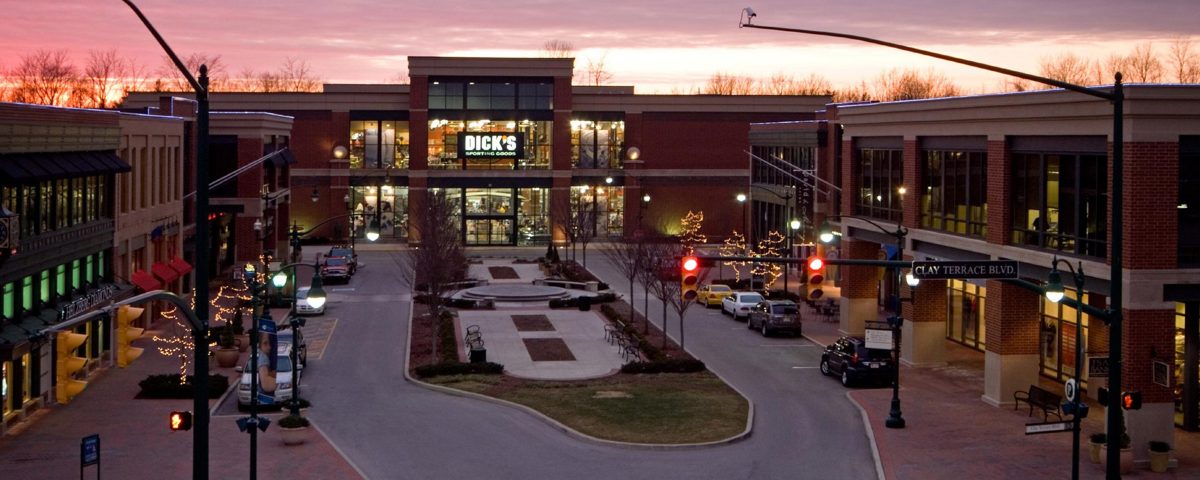Clay Terrace opened in in October 2004. The upscale, open-air shopping center exhibited the architectural theme of New Urbanism, harkening back to a pre-World War II main street shopping district.

Creating the site with such nostalgic touches as fountains, street furniture, burning fire pits, and vintage-looking storefronts on a boulevard-like street, owners and developers and Lauth Property Group branded the 577,000-square-foot Clay Terrace as the first “lifestyle center” in central Indiana. Development of the shopping center coincided with that of the , a New Urbanism residential area adjacent to Clay Terrace to the west. Construction of the mall also corresponded with the expansive growth of and Mayor Jim Brainard’s plans for Carmel’s redevelopment, which included the and the Arts and Design District.
The mall cost $100 million to complete. When it opened, Clay Terrace boasted a variety of retail tenants and included office space and upscale restaurants. Although Clay Terrace served as the model for a second lifestyle center in Hamilton County—Hamilton Town Center—in 2008, the trend toward such centers stalled in 2009, with the struggling economy, increased online competition, and a crowded retail landscape. Business owners became concerned as they watched stores come and go at Clay Terrace and found that cold winter days significantly lowered customer traffic.
In 2009-2010, Simon Property Group began to reinvent Clay Terrace to attract nontraditional tenants. In June 2014, the Washington Prime Group, a spin-off company of shopping mall operator Simon Property Group located in Columbus, Ohio, acquired Clay Terrace in a deal valued at $326 million. As part of the purchase agreement, Washington Prime Group bought out Lauth Property Group’s 50 percent ownership and assumed Lauth’s $57.5 million debt.
At the end of 2019, the center reported a 91.7 percent occupancy rate, but more than a dozen of the open-air mall’s storefronts were vacant. Washington Prime Group, in February 2020, announced its plan to rezone the site to include a mix of office space, apartments, and a hotel, as well as an additional 70,000 square feet of retail space.
To remain an asset to Hamilton County, the redevelopment aimed to mimic the taller, mixed-use developments sprouting up throughout the county, like that at Carmel City Center, which boasts apartments, restaurants, specialty shops, and the Center for the Performing Arts The company’s plans for redevelopment of the site have followed a national trend to introduce more population density into retail development to reinvigorate customer traffic through brick-and-mortar stores.
The COVID-19 pandemic delayed development, but in December 2020, the Carmel City Council agreed to rezone portions of the retail center to make way for the new apartments, hotel, and offices. However, in March 2021, Washington Prime acknowledged that it was on the verge of bankruptcy, and the future of Clay Center was, therefore, unclear.

Help improve this entry
Contribute information, offer corrections, suggest images.
You can also recommend new entries related to this topic.
